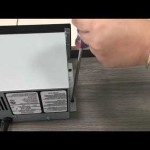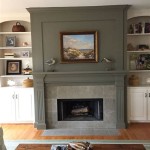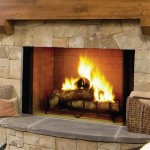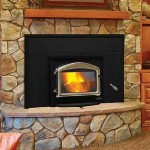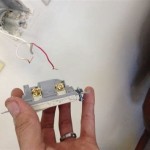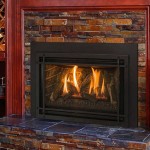Ventless Wall Fireplaces: A Comprehensive Guide
Ventless wall fireplaces, also known as vent-free or unvented fireplaces, offer an alternative to traditional wood-burning or gas fireplaces. They operate without the need for a chimney or venting system, making them relatively easy to install and potentially suitable for spaces where traditional fireplaces are not feasible. This article explores the functionality, benefits, considerations, and safety aspects of ventless wall fireplaces.
The primary difference between ventless and vented fireplaces lies in their combustion process and exhaust management. Vented fireplaces rely on a chimney or vent to expel combustion byproducts, such as carbon monoxide, smoke, and other gases, to the outside atmosphere. Ventless fireplaces, on the other hand, are designed to burn fuel almost completely, minimizing the production of these byproducts. They are equipped with oxygen depletion sensors that automatically shut off the unit if the oxygen levels in the room drop to unsafe levels. This feature is crucial for ensuring safe operation within an enclosed space.
Ventless wall fireplaces are typically fueled by either natural gas or liquid propane. Electric fireplaces are also available and often get included under the ventless umbrella, even though they don't involve combustion. The fuel type affects the heat output and overall efficiency of the unit. The choice of fuel also depends on the availability of gas lines or the need for propane tank storage. Electric fireplaces simply require a standard electrical outlet, which increases their installation flexibility.
The design of ventless wall fireplaces can vary significantly. These fireplaces are available in a variety of styles, from traditional designs mimicking wood-burning fireplaces to modern, sleek designs. They can also be integrated into existing walls or mounted as freestanding units. The aesthetic appeal of ventless wall fireplaces makes them a popular choice for homeowners looking to add a focal point to their living space without the expense and complexity of installing a traditional fireplace system.
Key Point 1: Understanding the Core Functionality
Ventless wall fireplaces achieve their vent-free operation through advanced burner technology and a carefully controlled combustion process. The burners are designed to mix fuel and air in precise ratios, ensuring near-complete combustion. This process minimizes the production of carbon monoxide, soot, and other harmful emissions. The oxygen depletion sensor (ODS) is a critical safety feature. It continuously monitors the oxygen levels in the room. If the oxygen level drops below a predetermined threshold, the ODS automatically shuts off the gas supply to the burner, preventing the buildup of carbon monoxide and mitigating the risk of asphyxiation.
Beyond the burner and ODS, ventless fireplaces often incorporate other safety features, such as overheat protection and flame failure detection. Overheat protection prevents the unit from overheating, which can be caused by malfunctions or improper installation. Flame failure detection ensures that the gas supply is shut off if the flame is extinguished unexpectedly. These safety features provide an additional layer of protection for homeowners and their families.
The heat output of a ventless wall fireplace is measured in British Thermal Units (BTUs). The BTU rating indicates the amount of heat the fireplace can generate per hour. The appropriate BTU rating for a particular space depends on the size of the room and the desired level of heating. It is essential to select a unit with a BTU rating that is appropriate for the room size to avoid overheating the space or wasting energy. Manufacturers typically provide guidelines on the recommended BTU rating for different room sizes.
The efficiency of a ventless fireplace is significantly higher than that of a vented fireplace. Because there is no chimney or vent to exhaust heat, virtually all of the heat generated by the fireplace is retained in the room. This results in greater energy efficiency and lower heating costs. However, it also means that ventless fireplaces can contribute to a buildup of moisture and humidity in the room, which is a consideration for homeowners in humid climates or those with moisture-sensitive building materials.
Key Point 2: Weighing the Benefits and Considerations
The primary benefit of ventless wall fireplaces is their ease of installation. Because they do not require a chimney or venting system, they can be installed in almost any room in the house. This makes them a popular choice for homeowners who want to add a fireplace to a room where a traditional fireplace is not feasible. The installation process typically involves mounting the unit to the wall and connecting it to a gas line or propane tank (or simply plugging in an electric model).
Another benefit of ventless fireplaces is their aesthetic versatility. They are available in a wide range of styles, from traditional to contemporary, and can be customized to match any décor. Many ventless fireplaces feature realistic-looking flames and ember beds, creating the ambiance of a traditional wood-burning fireplace. Some models also offer features such as remote control operation, adjustable flame height, and built-in thermostats.
While ventless fireplaces offer numerous benefits, there are also several considerations to keep in mind. One of the most important considerations is the potential for indoor air quality issues. Although ventless fireplaces are designed to burn fuel almost completely, they still produce small amounts of carbon monoxide and other pollutants. It is essential to ensure that the room is adequately ventilated to prevent the buildup of these pollutants. Proper ventilation can be achieved through open windows, exhaust fans, or a whole-house ventilation system. Regular inspection and maintenance of the fireplace, as well as the use of carbon monoxide detectors, are also essential for ensuring safe operation.
Another consideration is the potential for moisture buildup. As mentioned earlier, ventless fireplaces retain all of the heat generated by the fireplace in the room, which can lead to increased humidity levels. This can be problematic in humid climates or in homes with poor ventilation. Homeowners in these situations may need to consider using a dehumidifier to control moisture levels and prevent mold growth. It's also worth considering that the heat output of a ventless natural gas or propane fireplace can sometimes create a noticeable smell, particularly when first used or after a period of inactivity. This smell is usually temporary and dissipates after the unit has been running for a while.
Furthermore, some jurisdictions have regulations or restrictions regarding the use of ventless fireplaces. It is crucial to check local building codes and regulations before installing a ventless fireplace to ensure compliance. Some jurisdictions may prohibit the use of ventless fireplaces altogether, while others may require specific permits or inspections. Failure to comply with local regulations can result in fines or other penalties.
Key Point 3: Prioritizing Safety and Maintenance
Safety is paramount when operating a ventless wall fireplace. Regularly testing carbon monoxide detectors is crucial. These detectors provide an early warning if carbon monoxide levels in the room become dangerously high. It is recommended to install carbon monoxide detectors on every level of the home and in close proximity to sleeping areas. The detectors should be tested regularly, and the batteries should be replaced as needed.
Proper ventilation is equally crucial. Even though ventless fireplaces are designed to burn fuel almost completely, they still produce small amounts of carbon monoxide and other pollutants. Adequate ventilation helps to prevent the buildup of these pollutants and ensures that the air quality in the room remains safe and healthy. Ventilation can be achieved through open windows, exhaust fans, or a whole-house ventilation system.
Regular inspection and maintenance are essential for ensuring the safe and efficient operation of a ventless wall fireplace. The burner should be inspected regularly for dirt and debris, and it should be cleaned as needed. The ODS should also be inspected to ensure that it is functioning properly. If the ODS is not working correctly, it should be replaced immediately. The fireplace should also be inspected for any signs of damage or wear, such as cracks, leaks, or corrosion.
Furthermore, it is important to follow the manufacturer's instructions for operating and maintaining the fireplace. The manufacturer's instructions provide specific guidelines on how to use the fireplace safely and efficiently. They also include information on troubleshooting common problems and performing routine maintenance tasks. Failure to follow the manufacturer's instructions can void the warranty and potentially create safety hazards.
When choosing a ventless wall fireplace, it's important to select a unit that is certified by a recognized testing laboratory, such as the American Gas Association (AGA) or Underwriters Laboratories (UL). Certification indicates that the fireplace has been tested and meets established safety standards. This provides assurance that the unit is safe to operate and that it will perform as intended.
Finally, be mindful of combustible materials near the fireplace. Ensure that curtains, furniture, and other flammable items are kept a safe distance from the fireplace to prevent fire hazards. A general rule of thumb is to maintain a clearance of at least three feet around the fireplace. Adhering to these safety precautions will help to ensure that you can enjoy your ventless wall fireplace safely and responsibly.

Empire Boulevard 30 Inch Slim Line Wall Mounted Recessed Vent Free Gas Fyre Direct

Duluth Forge 28 In 26 000 Btu Ventless Linear Wall Gas Fireplace With Thermostat Black 110037 The Home Depot

Duluth Forge 44 In Ventless Dual Fuel Gas Wall Fireplace Toasted Almond With Thermostat Model Df300l M Ta 170175 The Home Depot

Vent Free Archives SÓlas Contemporary Fireplaces

Ignis Long Ventless Ethanol Wall Fireplace Maximum

Empire Boulevard 30 Inch Slim Line Wall Mounted Recessed Vent Free Gas Fyre Direct

Milan 24 Inch Ventless Wall Mounted Bio Ethanol Fireplace Ew

Napoleon Plazmafire Vent Free Wall Mount Natural Gas Fireplace With Painted Black Rectangular Surround
:max_bytes(150000):strip_icc()/ventless-gas-fireplaces-4160746-hero-f9d4bdcd9bd446eb84406de306f790ba.jpg?strip=all)
How To Pick Out A Ventless Gas Fireplace

Ventless Gas Fireplace Propane
Related Posts

